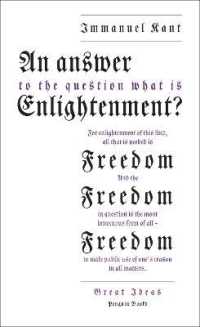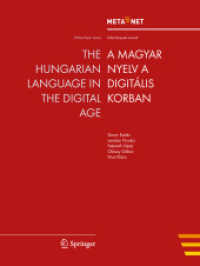Full Description
The postwar histories of Paris and Amsterdam have been significantly defined by the notion of the -underground as both a material and metaphorical space. Examining the underground traffic between the two cities, this book interrogates the countercultural histories of Paris and Amsterdam in the mid to late-twentieth century. Shuttling between Paris and Amsterdam, as well as between postwar avant-gardism and twenty-first century global urbanism, this interdisciplinary book seeks to create a mirroring effect over the notion of the underground as a driving force in the making of the contemporary European city.
Contents
[-]Table of Contents[-][-]David Pinder[-]Foreword[-][-]Christoph Lindner and Andrew Hussey[-]1. Concepts and Practices of the Underground[-][-]PART 1 - PROJECTIONS[-][-]Sophie Berrebi[-]2. Metromania or the Undersides of Painting[-][-]Andrew Hussey[-]3. Mapping Utopia: Debord and Constant between Amsterdam and Paris[-][-]Gert Hekma[-]4. Amsterdam's Sexual Underground in the 1960s[-][-]PART 2 - MOBILITY[-][-]Sudeep Dasgupta[-]5. Detours, Delays, Derailments: La Petite J rusalem and Slow Training in Culture[-][-]Ginette Verstraete[-]6. Underground Visions: Strategies of Resistance along the Amsterdam Metro Line[-][-]Allen Hibbard[-]7. Underground Circulation: The Beats in Paris and Beyond[-][-]PART 3 - VISIBILITY[-][-]Carolyn Birdsall[-]8. (In)audible Frequencies: Sounding out the Contemporary Branded City[-][-]Joyce Goggin[-]9. Red Lights and Legitimate Trade: Paying for Sex in the Branded City[-][-]Anna-Louise Milne[-]10. Visibly Underground: When Clandestine Workers Take the Law into Their Own Hands[-][-]Stephen W. Sawyer[-]11. Archaeology of the Parisian Underground[-][-]



![弾きたい曲がいっぱい!ピアノのたからばこ[トパーズ] - 愛らしいタランテラ~秋のセレナーデ](../images/goods/ar2/web/imgdata2/42764/4276432723.jpg)




